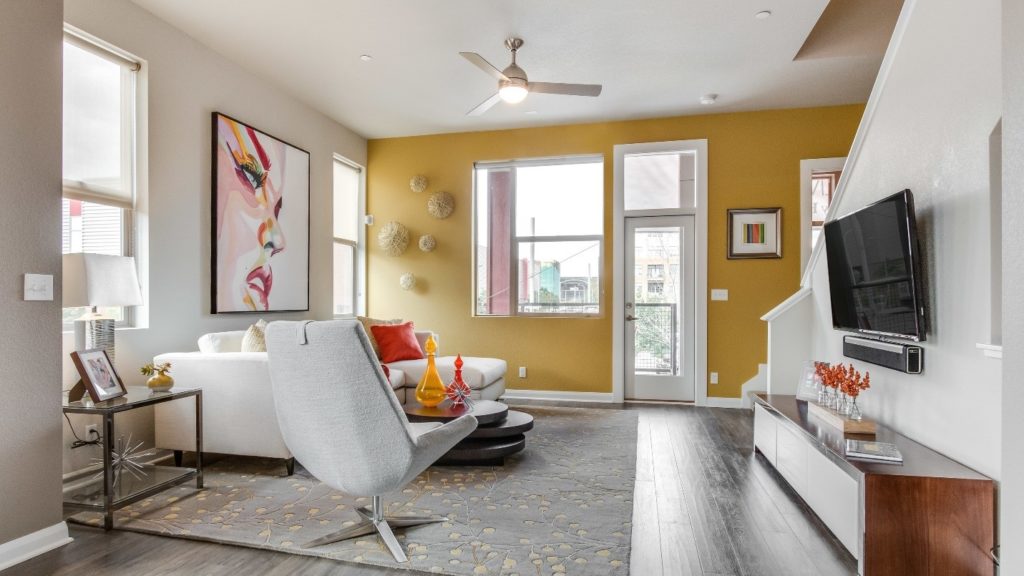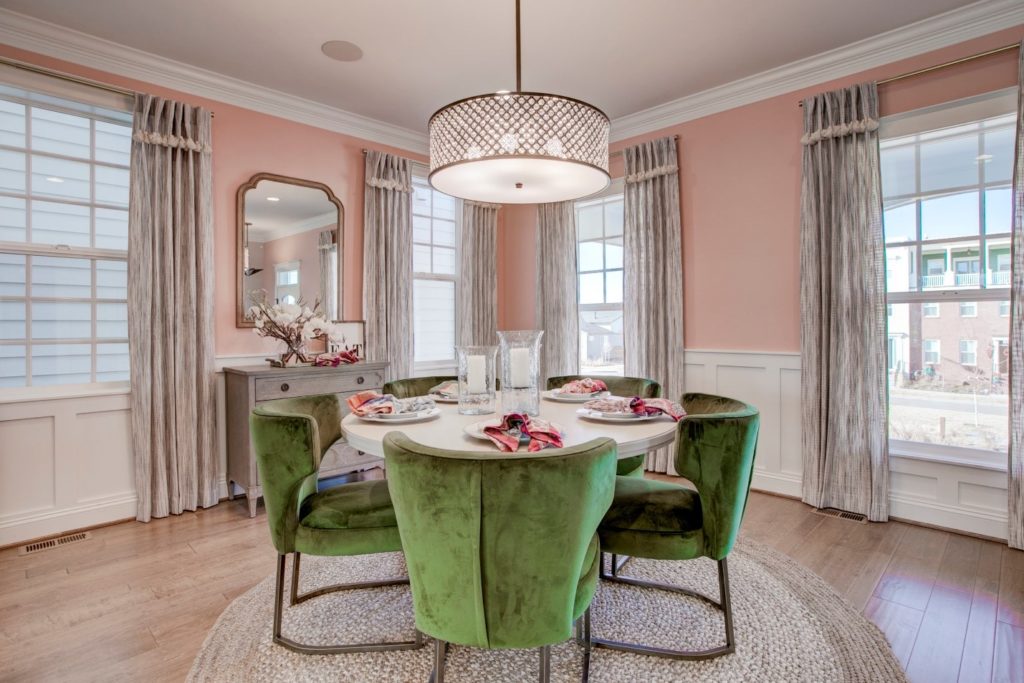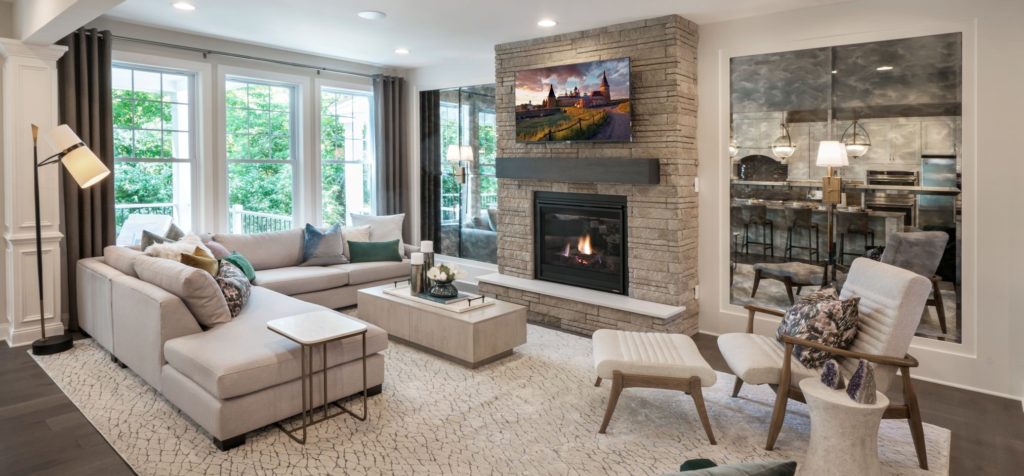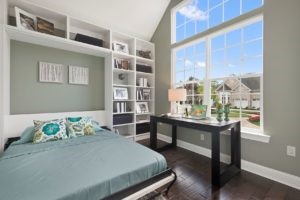By Sue Ridgeway
Great rooms may be great, but what about smaller spaces? Small space design requires big ideas. A model home is a marketing investment, and as such, every room within the model is important. And while big spaces, such a great room or the kitchen, attract a significant amount of money per square foot to merchandise, ensuring the smaller spaces are effective selling tools is equally – if not more – important. Often it is the small space designs that require more creativity. To ensure that all the spaces in a model are effectual in selling the house, it is key to employ big design ideas for small space design such as:
Being Bold
Whether it is using bright paint on an accent wall, a dramatic art piece, or a busy-patterned wallpaper for the powder room, being bold can help a small space stand out. Prospective buyers often walk multiple models when shopping for a new home, frequently on the same day. You want your model to stand out. Boldness can help create an impression that lasts.

Further, being bold can help make a small space appear larger. It may seem counter intuitive, but bold dark colors and/or shining metal accents can actually help to create a visually “large” impression of a space.
Boldness also applies to the furnishings of a room. Many people think small spaces need small furniture, but that isn’t always the case. Smaller pieces can actually make the space look off balance and create an awkward feel in a room. Using large rugs where most of the furniture can be placed on the rug is a great way to make a small space feel more open.
Going Vertical
Good design can help expand a small space vertically. For example, floor to ceiling shelving with doors and a mix of open and closed storage provides an illusion of space for our eyes. Hanging drapery panels as high as the wall allows can also add more height in a room. Remember to always try to have the design follow the architecture.

Featuring Flexibility
Movable, convertible, flexible furniture is another design tactic that can help a small space stand out. You may want a desk and/or bed in a guest bedroom, but will the buyer really need them 24-7? By using flexible furniture such a Murphy bed that can fold up when not in use not only frees up floor space and makes the space appear bigger, it can also inspire visions of multiple uses for the room. Loft beds, tables on wheels, and other flexible furnishings can help promote the impression of space and use options.
Using Mirrors
Mirrors are a small space’s best friend. They can be used within a gallery wall or on a wall adjacent to a window to make the space seem larger and brighter. Be it decorative or large and installed, the power of mirror to make a small space feel open and airy is key.

Designing for small spaces can be challenging, but it can also be quite fun for the designer. Large spaces give more flexibility while in a small space, designers need to carefully consider every element to ensure the space is properly designed and merchandised.
Post courtesy of Sue Ridgeway, Director of Marketing at Lita Dirks & Co., an interior design and merchandising firm based in Greenwood Village, Colo.
Follow Lita Dirks & Co. on Instagram, Facebook and LinkedIn for more interior design ideas and inspiration.



